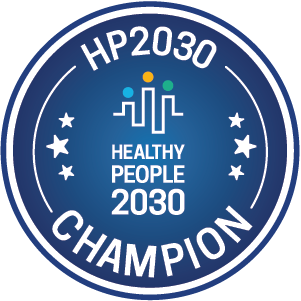Promising Practices
The Promising Practices database informs professionals and community members about documented approaches to improving community health and quality of life.
The ultimate goal is to support the systematic adoption, implementation, and evaluation of successful programs, practices, and policy changes. The database provides carefully reviewed, documented, and ranked practices that range from good ideas to evidence-based practices.
Learn more about the ranking methodology.
Filed under Evidence-Based Practice, Health / Mental Health & Mental Disorders
Goal: The goal of this program is to help clients move beyond trauma and substance abuse.
Impact: Multiple evaluations of the Seeking Safety program in various settings have shown positive outcomes for substance abuse/addiction, substance abuse disorder, and post-traumatic stress disorder.
Filed under Effective Practice, Environmental Health / Built Environment
Goal: Smart Growth has three straightforward goals:
- to save our most valuable remaining natural resources before they are forever lost,
- to support existing communities and neighborhoods by targeting state resources to support development in areas where the infrastructure is already in place or planned to support it, and
- to save taxpayers millions of dollars in the unnecessary cost of building the infrastructure required to support sprawl.
Filed under Good Idea, Health / Oral Health, Children, Families
Goal: The Smile Programs... the mobile dentists mission is to bring state-of-the-art, dental care to those students in need in the most comfortable and effective way possible.
Impact: Smile Programs provides mobile dental care to children in schools in over a dozen states.
Filed under Evidence-Based Practice, Economy / Housing & Homes
Impact: The Community Preventive Services Task Force (CPSTF) recommends permanent supportive housing with Housing First (Housing First programs) to promote health equity for people who are experiencing homelessness and have a disabling condition.
Evidence shows Housing First programs decrease homelessness, increase housing stability, and improve quality of life for homeless persons living with disabling conditions, including those with HIV infection. For clients living with HIV infection, these programs also improve clinical indicators and mental health and reduce mortality. Housing First programs also lead to reduced hospitalization and use of emergency departments for homeless persons with disabling conditions, including HIV infection.
The CPSTF finds the economic benefits exceed the intervention cost for Housing First Programs in the United States. Because homelessness is associated with lower income and is more common among racial and ethnic minority populations, Housing First Programs are likely to advance health equity.
Filed under Effective Practice, Health / Oral Health, Children, Women
Goal: The purpose of the "Something to Smile About" dental program is to improve dental outcomes for children in Garrett County, Maryland.
Filed under Effective Practice, Community / Transportation, Children, Urban
Goal: The goal of the Springfield Safe Communities project was to reduce the number of alcohol-related traffic crash fatalities, and to increase seat belt use throughout the city and surrounding areas.
Filed under Good Idea, Health / Oral Health, Children, Older Adults, Urban
Goal: The goal of St. Peter's Dental Program is to improve access to dental care and treatment for the poor, elderly, and under served populations living in and around Albany, New York.
Filed under Evidence-Based Practice, Health / Health Care Access & Quality
Goal: To find, explore, and implement a sustainable funding stream for community-based healthcare interventions.
Filed under Evidence-Based Practice, Health / Prevention & Safety, Older Adults
Goal: Stepping On aims to reduce the prevalence of falls among older adults. Falls are not a normal part of aging and the risk and/or prevalence of falls may be decreased by taking certain steps, including vision checks, medication management, strength & balance exercises, and home safety checks. Falls and/or the fear of falling often lead to a loss of independence.
Impact: This evidence-based program demonstrated a 31% reduction in falls among participants in an Australian trial. It reached a 50% reduction in falls among participants in a U.S. workshop.
Filed under Evidence-Based Practice, Health / Physical Activity, Adults, Urban
Goal: To determine whether online peer support will increase adherence to an Internet-based pedometer walking program.
Impact: Stepping up to Health shows that online communities can help reduce attrition within online health behavior change interventions.

